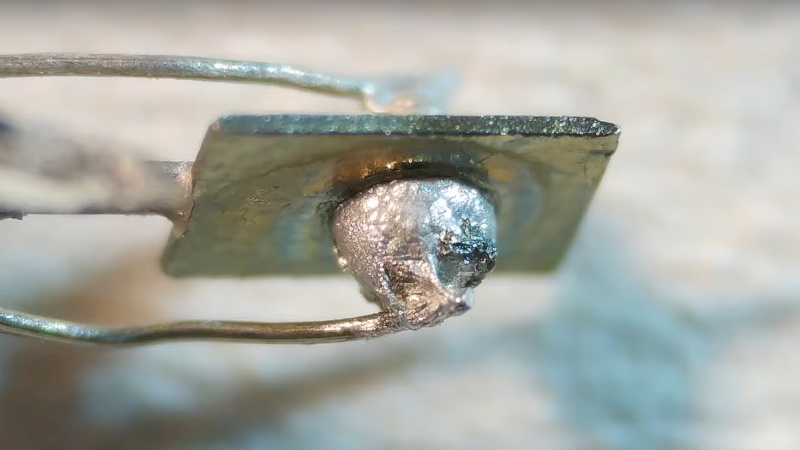The first transistors were point contact devices, not far from the cats-whiskers of early radio receivers. They were fragile and expensive, and their performance was not very high. The transistor which brought the devices to a mass audience through the 1950s and 1960s was the one which followed, the alloy diffusion type. [Play With Junk] has a failed OC71 PNP alloy diffusion transistor, first introduced in 1957, and has cracked it open for a closer look.
Inside the glass tube is a small wafer of germanium crystal, surrounded by silicone grease. It forms the N-type base of the device, with the collector and emitter being small indium beads fused into the germanium. The junctions were formed by the resulting region of germanium/indium alloy. The outside of the tube is pained black because the device is light-sensitive, indeed a version of this transistor without the paint was sold as the OCP71 phototransistor.
These devices were leaky and noisy, with a low maximum frequency and low gain. But they were reliable and eventually affordable, so some of us even cut our electronic teeth on them.
















Oh my electronic teeth really cut on OC71:)
“I can’t believe I was sold a random piece of metal with wires soldered on it! I’ve been scammed!”
you snikkers
Never had an OC71. My first transistor was a CK722 that my older brother gave me. Building my circuit (a simple single stage amplifier) I broke off the emitter lead. Tears.
OC71 and OC72 were the ones I learned electronics with. With “high power” applications such as lamp flashers, small DC motor control and speaker amplifier, OC74 was unbeatable. Then came AC187/188 and AD161/162 and then “undestructible” silicon transistors. Well, compared to germaniums, they did survive much more abuse.
The OC prefix followed the established prefixing of tubes, first letter indicating filament voltage and second letter the function. So EA meant a diode tube with 6.3V filament and ECC a double triode with 6.3V filament.
Since the transistor did not need any filament voltage, it got a letter O for zero, and C for triode – which was the closest tube designation. There were many germanium diodes with OA prefix.
OA would be PNP then :)
” indeed a version of this transistor without the paint was sold as the OCP71 phototransistor.”
More specifically, it had a window in the paint and cost many times more than an OC71 and, when everyone just scraped the paint and used the cheaper option, they started using blue grease in the OC71, reserving the clear grease for the more expensive OCP71.
Dot shows collector…….